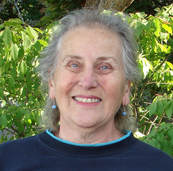 Do your feet sometimes smell rotten? Do you wish you could toss out your shoes and start with a new pair? We make jokes about smelly feet, but smell and feet have a very different relationship among some insects. Take butterflies. Have you ever watched a butterfly flit over a plant, gently touch its feet to a leaf, and then fly on to the next leaf? That butterfly isn’t being picky about where to land. It’s hunting for the right kind of leaf for laying its eggs. It’s “smelling” the leaf with its feet! Actually, we need to qualify that statement a bit. Some writers will say the insect is “smelling” the leaf while others may write that it’s “tasting” the leaf. Smelling and tasting are forms of “chemoreception,” or sensing of chemicals. Smell usually refers to sensing from a distance while tasting generally means actually touching the nerve cells that sense a chemical. We humans have cells in our noses that send messages to our brains about chemicals in the air. We call that our sense of smell. We have cells on our tongues that sense chemicals dissolved in liquid in our mouths. That’s taste. That butterfly doesn’t have a nose, and its mouth is a long tube for sucking up nectar from flowers. Its chemoreceptors are elsewhere, like on its feet, around its mouth, and on its antennae. Most butterflies lay their eggs on the plants that the hatched caterpillars will eat. Some species are very specific about what plants their young can feed on. Take the postman butterfly, which lives in Central and South America. Its caterpillars can only survive on certain species of passionflower vines. Other species are poisonous to their offspring. The female postman butterfly has dozens of special nerve cells on her feet called “gustatory sensilla.” Scientists think that when she touches gently down on a leaf, these cells can sense chemicals there that would be poisonous to her caterpillars. She avoids laying eggs on those leaves. But when she finds a plant that will nourish her young, she’ll alight and lay her eggs. Now take your shoes off and move your feet around on the floor. The only nerve endings on your feet are ones that sense touch. But then, you don’t need to be able to smell the ground you walk on. Imagine how gross it would be if your feet could smell the insides of your socks and shoes—yuck! 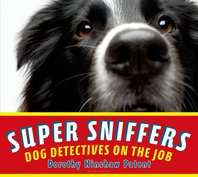 A dog’s nose is 300 times more powerful than a human nose, so it’s no wonder that dogs use their incredibly advanced sense of smell to do some very important jobs. In Super Sniffers, Dorothy Hinshaw Patent explores the various ways specific dogs have put their super sniffing ability to use: from bedbug sniffers to explosive detectors to life-saving allergy detectors . . . and more. This dynamic photo-essay includes first-hand accounts from the people who work closely with these amazing dogs. For more information, click here. Dorothy Hinshaw Patent is a member of iNK's Authors on Call and is available for classroom programs through Field Trip Zoom, a terrific technology that requires only a computer, wifi, and a webcam. Click here to find out more. MLA 8 Citation
Patent, Dorothy Hinshaw. "Smelling Feet or Smelly Feet?" Nonfiction Minute, iNK Think Tank, 23 Jan. 2018, www.nonfictionminute.org/the-nonfiction-minute/ Smelling-Feet-or-Smelly-Feet.
0 Comments
 Almost every spring an amazing event in nature happens in parts of the United States. Huge numbers of insects called periodical cicadas emerge from the soil. For a few weeks they fill the days with loud buzzing calls. Every summer you can hear the calls of some kinds of cicadas, but periodical cicadas are different. They exist only in the eastern two-thirds of the United States, and have the longest of all insect lives. Some periodical cicadas live 13 years, others 17 years, with nearly all of that time spent underground. Young cicadas, called nymphs, sip water and nutrients from tree roots. The nymphs count the years, probably by sensing changes in tree sap, as it is affected by the seasons of each year. When their countdown ends and soil warms in the spring, millions of cicada nymphs dig out. They climb posts, bushes, and trees, and cling there. Their nymph "skins" split open and adult cicadas wriggle free. Finally, after many years underground, they are out in the sunshine. They can fly, and the buzzing noises of males attract females. It is a noisy and hectic time in their lives. They have just a few weeks to mate and produce the next generation. Once females lay eggs in tree twigs, all of the adults die. Soon after, tiny nymphs hatch from the eggs. They drop to the soil, borrow in, and begin to sip juices from tree roots. The nymphs grow slowly, counting the years until they will have their own time in the sun. Nearly every year, one or more populations, called broods, of periodical cicadas emerge. Seventeen year cicadas live mostly in the Northeast and Upper Midwest. Thirteen year cicadas are most common in the South and Lower Midwest. Some broods emerge in parts of just a few states. Some years, a more widespread brood emerges in parts of fifteen states. Notice that I say "parts" of states. These cicadas don't roam around. The nymphs go underground in the same places where their parents emerged. You will find them in one town but not another, in one neighborhood but not another. Some people call cicadas "locusts," but locusts are a kind of grasshopper that eats plants. Cicadas do not chew on plants. They are harmless, fascinating creatures. And, once in a great while, they give us a rare and awe-inspiring animal spectacle. 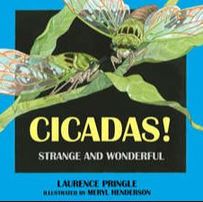 Visit the great website, Cicadamania, which has high praise for this book: "Definitely the best cicada book for kids. Adults will appreciate it as well, as it is well written, factually accurate, and beautifully illustrated." You can read more about Larry's fascination for these creatures on his website. MLA 8 Citation
Pringle, Laurence. "Here Come the Cicadas." Nonfiction Minute, iNK Think Tank, 23 Apr. 2018, www.nonfictionminute.org/the-nonfiction-minute/ Here-Come-the-Cicadas. 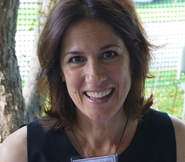 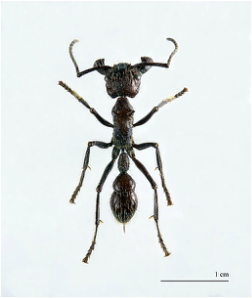 The insect pictured is called Paraponera clavata, commonly known as a bullet ant. It can grow to be about an inch long. They’re among the world’s most venomous insects, and are supposed to deliver the most painful sting of any insect, according to J.O. Schmidt. He’s an entomologist who’s been stung by pretty much every hymenopteran possible and who developed a pain scale rating that lists the relative pain caused by insects. His ratings go from 0, where the sting is as mild as the little zap you might feel while walking across a carpet in your socks, up to 4, where you might as well just lie down and scream. Bullet ants get a 4+. When he later revised his index, he described bullet ant stings as “pure, intense, brilliant pain, like walking over flaming charcoal with a three-inch nail in your heel.” But wait, it gets worse. The ants have abdominal stridulatory organs—that means they can shriek at you when threatened, which alerts the rest of the group to come boiling up out of the nest to help impale you. There’s a tribe of people in Brazil, deep in the Amazon forest, the Sateré-Mawé, who use bullet ants as an initiation rite to manhood. Boys have to slip on gloves that resemble oven mitts. Live bullet ants are woven into these gloves, with the stingers pointing toward the wearer’s hands. The boys have to keep the gloves on for ten minutes. Evidently paralysis of the arms sets in rather quickly, so it’s after the gloves come off that the real pain and convulsions begin—and they last at least 24 hours. Did I mention these ants also shriek? 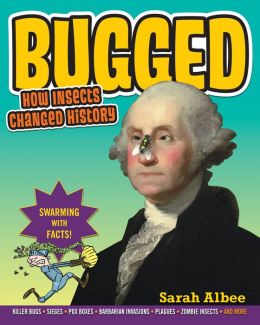 Did you know that bugs played a role in history? Sarah’s book Bugged: How Insects Changed History tells the story. MLA 8 Citation
Albee, Sarah. "Bites of Passage." Nonfiction Minute, iNK Think Tank, 26 Apr. 2018, www.nonfictionminute.org/the-nonfiction-minute/Bites-of-Passage. 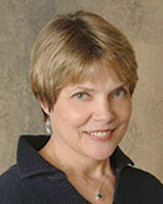 In the late 1800's when homesteaders first located their new claims in the Midwest, some saw nothing in any direction but tall prairie grass. On 160 acres of windswept land, there might not be a single tree. But these settlers were resourceful. They set to work building homes and barns from the one thing they had in abundance: the sod beneath their feet. Because the soil had never been tilled, roots were tightly packed, and sod could be cut from the earth in three-foot- thick blocks. The sod houses that settlers built stood up well to harsh Midwest weather. Sod was a natural insulator, keeping out cold in winter, and heat in summer, while wood houses, which usually had no insulation, were just the opposite: always too hot or too cold. Another advantage of a soddy was that it offered protection from fire, wind, and tornadoes. But a soddy also had drawbacks. Dirt constantly sifted down from the ceiling, making it almost impossible to keep clean. Rain or melting snow caused water to work its way through the roof and walls and run in trails along the floor, turning it to mud. Settlers actually used umbrellas or wore jackets—not to mention boots--to keep dry. Heavy rains and snow put the roof at risk of collapsing under the extra weight. If the soddy was built into a hillside and the family cow decided to graze on the roof, the cow could come crashing through the ceiling, especially if it had rained or snowed recently. The worst drawback was insects and critters. Blocks of sod were home to fleas, ticks, mice, worms, and even snakes. One settler reported a snake dropping down from the rafters right onto the table at dinnertime. And a young mother never got over finding a snake curled up with her baby. Before getting up in the morning, folks learned to look under the bed first--because you just never knew. In spite of this, lots of settlers loved their soddies and stuck with them even after they could afford to have wood shipped in to build what most people considered to be a proper house. They added on rooms, plastered all the walls, and installed wood floors and ceilings to keep the critters out. With that done, living in a soddy suited them just fine. And when the soddy needed repairs, they merely stepped outside, looked down—and there was their building material.  You can learn more about what it was like to live in a sod house in Andrea Warren's nonfiction book for young readers,Pioneer Girl: A True Story of Growing Up on the Prairie. Andrea Warren is a member of iNK's Authors on Call and is available for classroom programs through Field Trip Zoom, a terrific technology that requires only a computer, wifi, and a webcam. Click here to find out more. MLA 8 Citation
Warren, Andrea. "Snakes on the Dinner Table! Life in a Sod House." Nonfiction Minute, iNK Think Tank, 9 Mar. 2018, www.nonfictionminute.org/ the-nonfiction-minute/Snakes-on-the-Dinner-Table-Life-in-a-Sod-House.  Writing a recipe is harder than it looks. I found this out when a children’s magazine editor asked me to add a recipe to my article about eating insects. First, I thumbed through my recipe file mentally substituting bugs for a vital ingredient. Mushrooms stuffed with millipedes was out. (Most kids don’t like mushrooms.) I nixed beetle sausage, also. (Too much chopping and frying in a hot skillet.) Flipping to desserts, I chose toffee. I could substitute bugs for nuts. After my trip to the grocery store for butter, sugar and chocolate chips, I visited the pet shop, and asked for a cup of mealworms, which are fly larvae (also known as maggots, but that’s not very appetizing). The man handed me a little carton that looked like a Skippy cup of ice cream. I wrote that down because I would need to pass that information on to readers who, like me, had no clue how to purchase creepy-crawlies. With all the ingredients on the counter I recorded each step:
After that, I was on familiar ground blending butter and sugar, and sprinkling chocolate chips. I called my concoction Toffee Surprise, and taste-tested it in a large group setting where peer pressure encouraged full participation -- my mother’s birthday party! The verdict: The toffee was yummy, crunchy, and sweet with a subtle earthy aftertaste. Although I don’t plan on cooking more edible vermin, I did learn some important rules for writing a recipe: Choose a food that is reader-friendly; be aware of your readers’ abilities and safety issues; record every step in order; pay attention to even the smallest details; and prepare it yourself so you can work out the bugs (no pun intended). 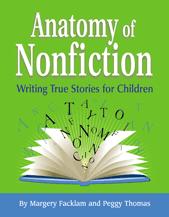 Peggy Thomas is the co-author of Anatomy of Nonfiction, the only writer's guide for children's nonfiction. To find out more about Peggy, visit her website. She also has a blog for writers, based on the book. Peggy Thomas is a member of iNK's Authors on Call and is available for classroom programs through FieldTripZoom, a terrific technology that requires only a computer, wifi, and a webcam. Click here to find out more. MLA 8 Citation
Thomas, Peggy. “How to Take an Elephant’s Temperature.” Nonfiction Minute, iNK Think Tank, 7 Nov. 2017, www.nonfictionminute.org/baking-with-bugs;-how-to-write-a-recipe. |
*NEWS
|
For Vicki Cobb's BLOG (nonfiction book reviews, info on education, more), click here: Vicki's Blog
The NCSS-CBC Notable Social Studies Committee is pleased to inform you
that 30 People Who Changed the World has been selected for Notable Social Studies Trade Books for Young People 2018, a cooperative project of the National Council for the Social Studies (NCSS) & the Children’s Book Council
Categories
All
Abolitionists
Adams Janus
Adaptation
Adaptations
Adkins Jan
Advertising
Aerodynamics
Africa
African American History
African Americans
Africa West
Agriculture
Aircraft
Air Pilots
Air Pressure
Air Travel
Albee Sarah
Alchemy
Alligators
Allusion
American History
American Icons
Amphibians
Amundsen Roald
Anatomy
Ancient
Ancient Cultures
Anderson Marian 1897-1993
Animal Behavior
Animal Experimentation
Animal Intelligence
Animals
Animation
Antarctica
Ants
Apache Indians
Apes
April Fool's Day
Architecture
Argument
Arithmetic
Art
Art Deco
Artists
Arts
Asia
Astronauts
Astronomy
Athletes
Atomic Theory
Audubon Societies
Authors
Autobiography
Automobiles
Aviation
Awards
Bacteria
Baseball
Battuta Ibn
Bears
Beatles
Beavers
Bees
Biodegradation
Biography
Biology
Biomes
Biomimicry
Biplanes
Birds
Black Death
Black History
Blindness
Blizzards
Bombs
Bonaparte Napoleon
Boone Daniel
Botany
Brazil
Bridges
Brill Marlene Targ
Brooklyn Bridge
Brown John
Buffaloes
Building Materials
Butterflies
Caesar
Caesar Julius
Caissons
Calculus
Calendars
Cannibal
Capitals
Caravaggio
Carbon Dioxide
Carnivores
Carson Mary Kay
Cartoons & Comics
Carving (Decorative Arts)
Cascade Range
Castaldo Nancy
Castles
Castrovilla Selene
Cathedrals
Cats
Caves
Celts
Cemeteries
Chemistry
Children's Authors
Child Welfare
China
Choctaw Indians
Christmas
Chronometers
Cicadas
Cinco De Mayo
Ciphers
Circle
Citizenship
Civil Rights
Civil Rights Movements
Civil War
Civil War - US
Climate
Climate Change
Clocks And Watches
Clouds
Cobb Vicki
COBOL (Computer Language)
Code And Cipher Stories
Collard III Sneed B.
Collectors And Collecting
Color
Commerce
Communication
Competition
Compilers
Composers
Computers
Congressional Gold Medal
Consitution
Contests
Contraltos
Coolidge Calvin
Cooling
Corms
Corn
Counterfeiters
Covid-19
Crocodiles
Cryptography
Culture
Darwin Charles
Declaration Of Independence
Decomposition
Decompression Sickness
Deep-sea Animals
Deer
De Medici Catherine
Design
Detectives
Dickens Charles
Disasters
Discrimination
Diseases
Disney Walt
DNA
Dogs
Dollar
Dolphins
Douglass Frederick 1818-1895
Droughts
Dr. Suess
Dunphy Madeleine
Ear
Earth
Earthquakes
Ecology
Economics
Ecosystem
Edison Thomas A
Education
Egypt
Eiffel-gustave-18321923
Eiffel-tower
Einstein-albert
Elephants
Elk
Emancipationproclamation
Endangered Species
Endangered-species
Energy
Engineering
England
Englishlanguage-arts
Entomology
Environmental-protection
Environmental-science
Equinox
Erie-canal
Etymology
Europe
European-history
Evolution
Experiments
Explorers
Explosions
Exports
Extinction
Extinction-biology
Eye
Fairs
Fawkes-guy
Federalgovernment
Film
Fires
Fishes
Flight
Floods
Flowers
Flute
Food
Food-chains
Foodpreservation
Foodsupply
Food-supply
Football
Forceandenergy
Force-and-energy
Forensicscienceandmedicine
Forensic Science And Medicine
Fossils
Foundlings
France
Francoprussian-war
Freedom
Freedomofspeech
French-revolution
Friction
Frogs
Frontier
Frontier-and-pioneer-life
Frozenfoods
Fugitiveslaves
Fultonrobert
Galapagos-islands
Galleys
Gametheory
Gaudi-antoni-18521926
Gender
Generals
Genes
Genetics
Geography
Geology
Geometry
Geysers
Ghosts
Giraffe
Glaciers
Glaucoma
Gliders-aeronautics
Global-warming
Gods-goddesses
Gold-mines-and-mining
Government
Grant-ulysses-s
Grasshoppers
Gravity
Great-britain
Great-depression
Greece
Greek-letters
Greenberg Jan
Hair
Halloween
Handel-george-frederic
Harness Cheryl
Harrison-john-16931776
Health-wellness
Hearing
Hearing-aids
Hearst-william-randolph
Henry-iv-king-of-england
Herbivores
Hip Hop
History
History-19th-century
History-france
History-world
Hitler-adolph
Hoaxes
Holidays
Hollihan Kerrie Logan
Homestead-law
Hopper-grace
Horses
Hot Air Balloons
Hot-air-balloons
Housing
Huguenots
Human Body
Hurricanes
Ice
Icebergs
Illustration
Imagery
Imhotep
Imperialism
Indian-code-talkers
Indonesia
Industrialization
Industrial-revolution
Inquisition
Insects
Insulation
Intelligence
Interstatecommerce
Interviewing
Inventions
Inventors
Irrational-numbers
Irrigation
Islands
Jacksonandrew
Jazz
Jeffersonthomas
Jefferson-thomas
Jemisonmae
Jenkins-steve
Jet-stream
Johnsonlyndonb
Jokes
Journalism
Keeling-charles-d
Kennedyjohnf
Kenya
Kidnapping
Kingmartinlutherjr19291968
Kingmartinlutherjr19291968d6528702d6
Kings-and-rulers
Kings Queens
Kings-queens
Koala
Labor
Labor Policy
Lafayette Marie Joseph Paul Yves Roch Gilbert Du Motier Marquis De 17571834
Landscapes
Languages-and-culture
Law-enforcement
Layfayette
Levers
Levinson Cynthia
Lewis And Clark Expedition (1804-1806)
Lewis Edmonia
Liberty
Lift (Aerodynamics)
Light
Lindbergh Charles
Liszt Franz
Literary Devices
Literature
Lizards
Longitude
Louis XIV King Of France
Lumber
Lunar Calendar
Lynching
Macaws
Madison-dolley
Madison-james
Madison-james
Mammals
Maneta-norman
Maneta-norman
Marathon-greece
Marine-biology
Marine-biology
Marines
Marsupials
Martial-arts
Marx-trish
Mass
Massachusetts-maritime-academy
Mass-media
Mastodons
Mathematics
May-day
Mcclafferty-carla-killough
Mcclafferty-carla-killough
Mckinley-william
Measurement
Mechanics
Media-literacy
Media-literacy
Medicine
Memoir
Memorial-day
Metaphor
Meteorology
Mexico
Mickey-mouse
Microscopy
Middle-west
Migration
Military
Miners
Mississippi
Molasses
Monarchy
Monsters
Montgomery
Montgomery-bus-boycott-19551956
Montgomery-heather-l
Monuments
Moon
Moran-thomas
Morsecode
Morsesamuel
Moss-marissa
Moss-marissa
Motion
Motion-pictures
Mummies
Munro-roxie
Munro-roxie
Musclestrength
Museums
Music
Muslims
Mythologygreek
Nanofibers
Nanotechnology
Nathan-amy
Nathan-amy
Nationalfootballleague
Nationalparksandreserves
Nativeamericans
Native-americans
Native-americans
Naturalhistory
Naturalists
Nature
Nauticalcharts
Nauticalinstruments
Navajoindians
Navigation
Navy
Ncaafootball
Nervoussystem
Newdeal19331939
Newman-aline
Newman-aline
Newton-isaac
New-york-city
Nobelprizewinners
Nomads
Nonfictionnarrative
Nutrition
Nylon
Nymphs-insects
Oaths Of Office
Occupations
Ocean
Ocean-liners
Olympics
Omnivores
Optics
Origami
Origin
Orphans
Ottomanempire
Painters
Painting
Paleontology
Pandemic
Paper-airplanes
Parksrosa19132005
Parrots
Passiveresistance
Patent Dorothy Hinshaw
Peerreview
Penguins
Persistence
Personalnarrative
Personification
Pets
Photography
Physics
Pi
Pigeons
Pilots
Pinkertonallan
Pirates
Plague
Plains
Plainsindians
Planets
Plantbreeding
Plants
Plastics
Poaching
Poetry
Poisons
Poland
Police
Political-parties
Pollen
Pollution
Polo-marco
Populism
Portraits
Predation
Predators
Presidentialmedaloffreedom
Presidents
Prey
Prey-predators
Prey-predators
Prime-meridian
Pringle Laurence
Prohibition
Proteins
Protestandsocialmovements
Protestants
Protestsongs
Punishment
Pyramids
Questioning
Radio
Railroad
Rainforests
Rappaport-doreen
Ratio
Reading
Realism
Recipes
Recycling
Refrigerators
Reich-susanna
Religion
Renaissance
Reproduction
Reptiles
Reservoirs
Rheumatoidarthritis
Rhythm-and-blues-music
Rice
Rivers
Roaringtwenties
Roosevelteleanor
Rooseveltfranklind
Roosevelt-franklin-d
Roosevelt-theodore
Running
Russia
Safety
Sanitation
Schwartz David M
Science
Scientificmethod
Scientists
Scottrobert
Sculpture
Sculpturegardens
Sea-level
Seals
Seals-animals
Secretariesofstate
Secretservice
Seeds
Segregation
Segregationineducation
Sensessensation
September11terroristattacks2001
Seuss
Sextant
Shackletonernest
Shawneeindians
Ships
Shortstories
Silkworms
Simple-machines
Singers
Siy Alexandra
Slavery
Smuggling
Snakes
Socialchange
Social-change
Socialjustice
Social-justice
Socialstudies
Social-studies
Social-studies
Sodhouses
Solarsystem
Sound
Southeast-asia
Soybean
Space Travelers
Spain
Speech
Speed
Spiders
Spies
Spiritualssongs
Sports
Sports-history
Sports-science
Spring
Squirrels
Statue-of-liberty
STEM
Storms
Strategy
Sugar
Sumatra
Summer
Superbowl
Surgery
Survival
Swanson-jennifer
Swinburne Stephen R.
Synthetic-drugs
Taiwan
Tardigrada
Tasmania
Tasmanian Devil
Tasmanian-devil
Technology
Tecumsehshawneechief
Telegraph-wireless
Temperature
Tennis
Terrorism
Thomas Peggy
Thompson Laurie Ann
Time
Titanic
Tombs
Tortoises
Towle Sarah
Transcontinental-flights
Transportation
Travel
Trees
Trung Sisters Rebellion
Tundra
Turnips
Turtles
Typhoons
Underground Railroad
Us-environmental-protection-agency
Us History
Us-history
Ushistoryrevolution
Us History Revolution
Us-history-war-of-1812
Us Presidents
Ussupremecourtlandmarkcases
Vacations
Vaccines
Vangoghvincent
Vegetables
Venom
Vietnam
Viruses
Visual-literacy
Volcanoes
Voting-rghts
War
Warne-kate
Warren Andrea
Washington-dc
Washington George
Water
Water-currents
Wax-figures
Weapons
Weather
Weatherford Carole Boston
Whiting Jim
Wildfires
Winds
Windsor-castle
Wolves
Woman In History
Women
Women Airforce Service Pilots
Women-airforce-service-pilots
Womeninhistory
Women In History
Women-in-science
Women's History
Womens-roles-through-history
Wonder
Woodson-carter-godwin-18751950
World-war-i
World War Ii
World-war-ii
Wright Brothers
Writing
Writing-skills
Wwi
Xrays
Yellowstone-national-park
Zaunders Bo
ArchivesMarch 2021
February 2021
January 2021
December 2020
November 2020
October 2020
September 2020
June 2020
May 2020
April 2020
March 2020
February 2020
January 2020
December 2019
October 2019
September 2019
August 2019
July 2019
May 2019
April 2019
March 2019
February 2019
January 2019
December 2018
November 2018
September 2018
June 2018
May 2018
April 2018
March 2018
February 2018
January 2018
December 2017
November 2017
October 2017
September 2017
March 2017
The NONFICTION MINUTE, Authors on Call, and. the iNK Books & Media Store are divisions of iNK THINK TANK INC.
a 501 (c) (3) nonprofit corporation. To return to the iNK Think Tank landing page click the icon or the link below. :
http://inkthinktank.org/
For more information or support, contact thoughts@inkthinktank.org
For Privacy Policy, go to
Privacy Policy
© COPYRIGHT the Nonfiction Minute 2020.
ALL RIGHTS RESERVED.
This site uses cookies to personalize your experience, analyze site usage, and offer tailored promotions. www.youronlinechoices.eu
Remind me later
Archives
March 2023
February 2023
January 2023
December 2022
November 2022
October 2022
September 2022
June 2022
May 2022
April 2022
March 2022
February 2022
January 2022
December 2021
November 2021
September 2021
April 2021
March 2021
February 2021
November 2020
October 2020
September 2020
June 2020
May 2020
April 2020
March 2020
February 2020
January 2020
October 2019
August 2019
July 2019
May 2019
April 2019
December 2018
September 2018
June 2018
May 2018
March 2018
February 2018
January 2018
December 2017
November 2017
October 2017
September 2017


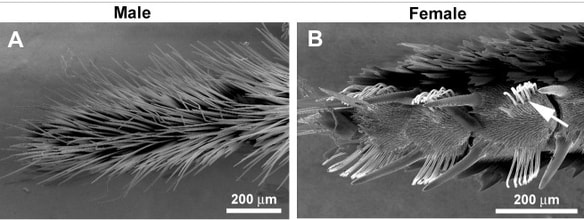
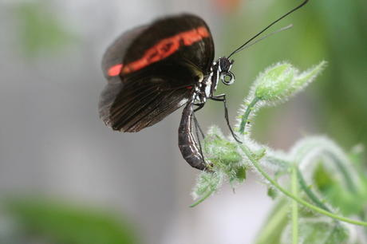
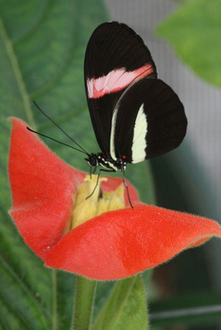


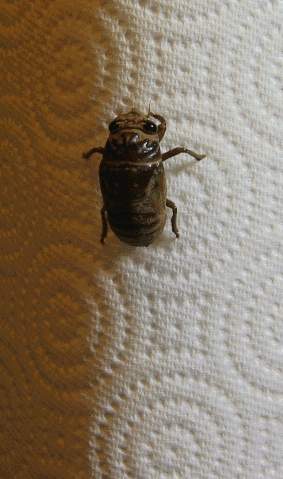
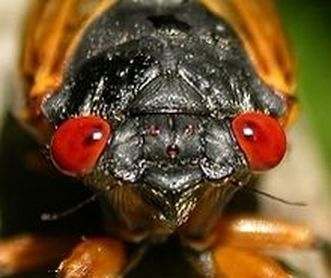




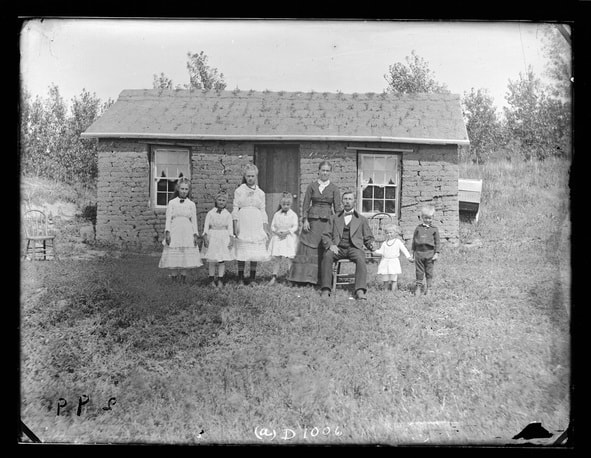
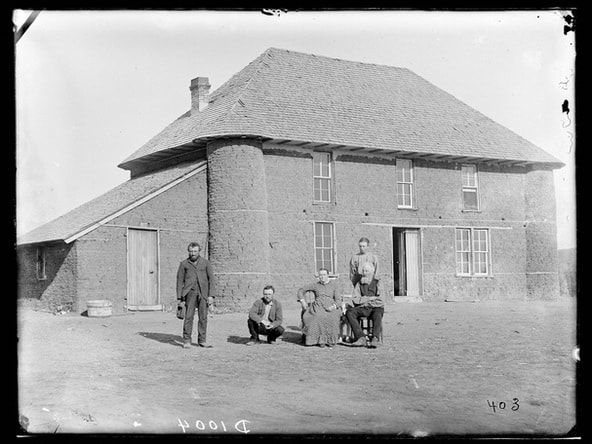


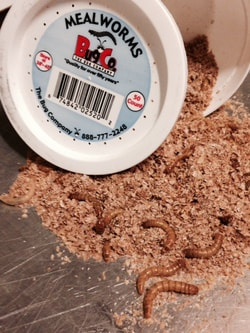
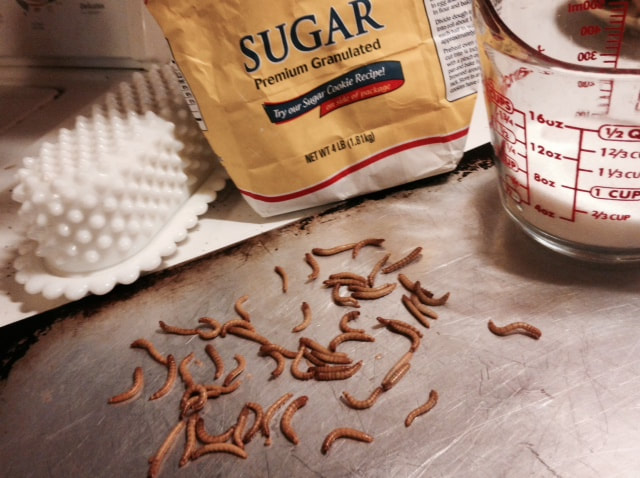

 RSS Feed
RSS Feed
